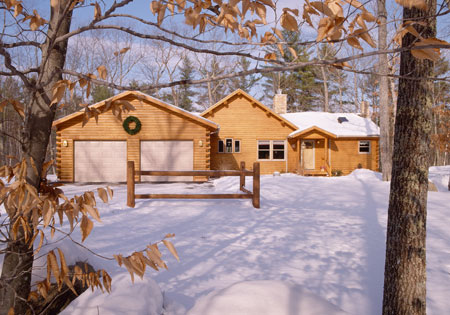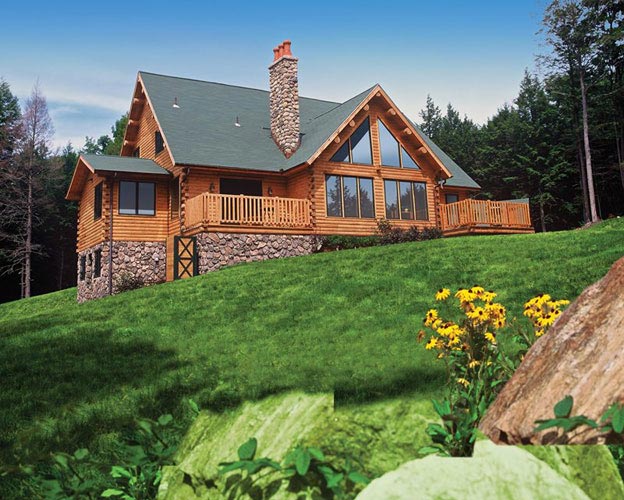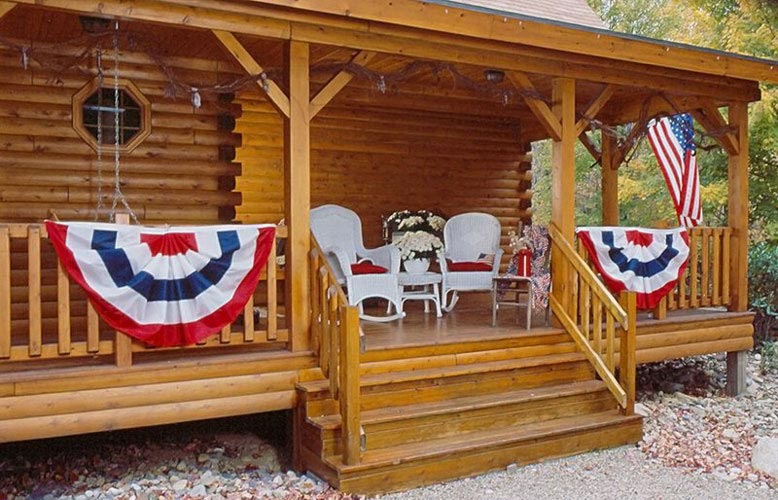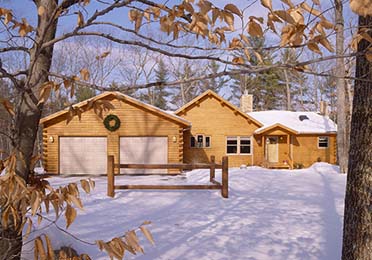Seven Ways to Cut Down on Upkeep
Posted by Ward Cedar Log Homes in Home Care and Maintenance Log Homes Step by Step Guide
Seven Ways to Cut Down on Upkeep
Your insider’s guide to log and timber home living, low-maintenance style
Ah, home maintenance. It’s a necessary part of home ownership no matter what type of home you own — log, timber or any other type of construction. For some, the tasks required to keep a home in tip-top shape are a pleasant part of home ownership. To you, we say, hats off! (And, teach us your ways!) But for the rest of us who want to spend less time maintaining a home and more time enjoying it, you’ve come to the right place.
Now, before we dive into the tips that can minimize the maintenance of your log or timber home, it’s important that we first clear up one common misconception — that log homes automatically require more than their fair share of upkeep. While it is true that a log home designed without future maintenance in mind can require additional attention, that doesn’t have to be the case. (Just call us your friendly, neighborhood myth busters!)
At Ward Cedar, we have been building log homes for well over 90 years. We know a thing or two about building homes that last and can withstand the elements. Your home will be designed with those tried-and-true tricks of the trade that reduce maintenance hassles, ultimately giving you more opportunity for relaxation.
Here are seven proven design strategies to minimize maintenance of your Ward Cedar log home:
1. Get a good start. When it comes to a log or timber home, it really is what’s on the inside that counts. A structure is only so good as the materials it is made of. That’s why we only use the heartwood of naturally rot and pest-resistant Northern White Cedar to build our homes. (Learn more about our logs here.)
2. Check out that profile. The details of our D-logs provide for longevity. Milled with a curved lip, known as a drip edge, each log directs rainwater away from your home, rather than allowing it to settle and seep into the logs below it.
3. Rock out. Using low-maintenance stone, whether real or faux, around the foundation of the house, will prevent logs from sitting against the ground, reducing the opportunity to absorb moisture.  4. Go deep. Deep eaves and gable ends play an essential role in keeping precipitation off of the exterior walls of your home. In addition, overhangs may help direct water away from the home, keeping moisture from pooling around the foundation and creating a splash back onto your wood walls.
4. Go deep. Deep eaves and gable ends play an essential role in keeping precipitation off of the exterior walls of your home. In addition, overhangs may help direct water away from the home, keeping moisture from pooling around the foundation and creating a splash back onto your wood walls.
5. Take cover. Including covered entryways, porches and covered decks into your home’s design gives your log walls solar protection, and areas of your log home that aren’t exposed to the sun’s rays may never need to have stain reapplied. Plus, these covered spaces serve as the perfect place to enjoy the outdoors, rain or shine. Note: Rocking chair + glass of iced tea required. 6. Stay Low. Choosing a single-story log cabin or timber home has tons of benefits — from energy-efficiency to the potential for aging in place — but you’ll also reap rewards in the maintenance department. When it comes time for a fresh coat of stain, you won’t have to make the trek up a steep ladder, bucket of stain in hand. Instead, grab a step ladder, and you’re done.
6. Stay Low. Choosing a single-story log cabin or timber home has tons of benefits — from energy-efficiency to the potential for aging in place — but you’ll also reap rewards in the maintenance department. When it comes time for a fresh coat of stain, you won’t have to make the trek up a steep ladder, bucket of stain in hand. Instead, grab a step ladder, and you’re done. 7. Choose a clear winner. When it comes to windows, our log cabin kit packages conclude top-of-the-line Andersen 200 Series windows, which feature low-maintenance Perma-Shield exteriors. The doors you’ll receive are sturdy, too — Therma-Tru fiberglass, which require less care than their steel or wood counterparts.
7. Choose a clear winner. When it comes to windows, our log cabin kit packages conclude top-of-the-line Andersen 200 Series windows, which feature low-maintenance Perma-Shield exteriors. The doors you’ll receive are sturdy, too — Therma-Tru fiberglass, which require less care than their steel or wood counterparts.
Contact us today to begin your log home journey.
Be sure to follow us on Facebook, Pinterest, and Instagram for inspiration, events, tips and more!


Post Your Comment